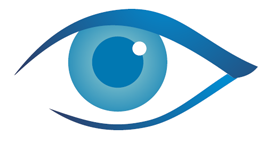CATARACT SURGERY
Cataract is a disease that causes clouding of the intraocular lens. These changes make it difficult for light rays to reach the retina, and consequently lead to impaired visual acuity. The greater the opacity of the eye lens, the greater the deterioration of visual acuity. Cataract is a progressive disease, but the rate at which the opacity develops varies from patient to patient. Lens opacities usually form in the central part (nuclear or posterior subcapsular cataract) or on the periphery (cortical cataract).
Cataract develop slowly and painlessly. The patient may not be aware of the deteriorating vision until it is necessary to visit an ophthalmologist, for example, to change glasses. It is one of the most common causes of blindness in the world. The risk of developing cataracts increases with age, however, the disease appears more and more often below the age of 55. The current level of advancement of surgical techniques and technological progress allow to obtain after cataract surgery the quality of vision often better than before the opacification of the lens.
The goal of cataract treatment is to restore the patient's vision so that they can enjoy a full quality of life. This means e.g. independence in performing daily activities, professional activity, practicing sports. The only recognized and effective method of cataract treatment is the surgical removal of the clouded lens and its replacement with an artificial intraocular lens. Currently, such a procedure is most often performed using the phacoemulsification technique. This technique allows a rollable intraocular lens to be inserted into the eye through a very small corneal incision. Once the lens is in the right place in the eye, it develops and takes the right shape. In most cases, cataract surgery takes about 20-30 minutes or less. It is performed under local anesthesia, which allows for its painless course. Most patients return to their usual activities within a few days.
Untreated cataracts can lead to vision loss. Early performance of the procedure also minimizes the costs resulting from partial visual impairment (e.g. frequent replacement of glasses, limitation of professional activity). Regular examination by an ophthalmologist allows for the diagnosis of cataract in its early stages and early treatment, therefore it is worth having your eyes checked by an ophthalmologist at least once a year.

Choosing an intraocular lens is a once in a lifetime choice. Due to the optical properties, we distinguish the following types of lenses:
- Single vision lenses for clear distance or near vision. This means that if you choose an intraocular lens that ensures good vision, e.g. from a distance, you can drive a car without glasses, but you will need glasses to correct your vision when reading a book.
- Multifocal lenses which in most cases allow clear vision both far away (e.g. driving a car) and up close (e.g. reading a book ). It is a solution for people who want to function in everyday life without glasses.
- Toric lenses, which are used for patients with astigmatism (so-called cylinders). They can be both monofocal and multifocal.

Intraocular lenses also differ in quality, which is determined by, among others: the type and parameters of the material (influence on the frequency of opacification of the posterior lens capsule, commonly known as secondary cataract), the presence of filters (additional presence of a blue light filter, which is present in the natural human lens and protects the retina), lens construction (the so-called aspheric optical part of the lens allowing for better quality of the image seen and the appropriate construction ensuring the stability of the lens after implantation), technological advancement and experience of the manufacturer . The above-mentioned lens features determine the quality of vision and patient safety.
In our center, during cataract surgery, we implant implants from the world's leading manufacturers of artificial lenses, both single and multifocal, taking into account the correction of astigmatism. However, it should be remembered that not every patient qualifies for the implantation of the so-called premium lenses. After a thorough interview and ophthalmological examination, together with the patient, we select the appropriate type of artificial lens to meet the patient's requirements regarding visual acuity and its daily functionality.
The following are examples of premium artificial intraocular lenses that we implant in patients during cataract surgery.
Intraocular lenses with three focal points for clear vision at different distances: near, intermediate and far. They correct presbyopia and astigmatism. They allow patients to get rid of glasses in everyday functioning.
Extended depth of field lens. It has a reduced amount of visual side effects usually associated with multifocal lenses. Patients with this lens enjoy good vision at night, especially when driving.
Single vision lens that precisely corrects astigmatism to correctly focus light on the retina. Improves vision at one distance, usually far away.
Trifocal, hydrophobic intraocular lenses that allow you to see near (approx. 40 cm), intermediate (approx. 60 cm) and distance without using glasses correction. They provide very comfortable vision in a wide range of near and intermediate distances. After implantation of this lens, the vast majority of patients do not need glasses for everyday functioning.
Presbyopia correcting intraocular lens that reduces the risk of halos and glare similar to single vision lenses. It is ideal for patients who are willing to wear reading glasses from time to time. AcrySof IQ Vivity has the same risk of visual impairment as a single vision lens and provides a full range of vision with functional near vision.
Patients report very good distance and intermediate vision in bright and subdued light.
Intraocular lens with extended vision for vision in all lighting conditions, distance, near and any distance in between. Also available in a version that corrects astigmatism.
EDOF (Extended Depth of Field) intraocular lens that allows the patient to see clearly at any distance while maintaining a balanced visual quality. They minimize or completely eliminate the need for glasses.
